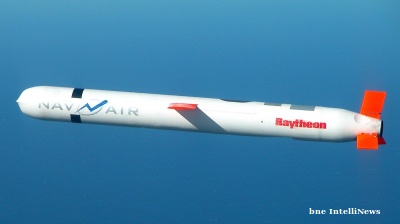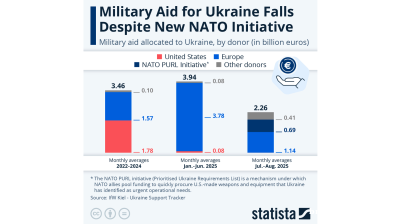The World Nuclear Association (WNA) has released a report forecasting a significant increase in the global demand for uranium in nuclear reactors through to 2030, Reuters reported on September 7.
The report forecasts a 28% rise in demand by 2030 and nearly doubling by 2040 as governments worldwide expand nuclear power capacity to meet zero-carbon goals. The combination of global warming and the shift to renewable power, combined with the war in Ukraine has also contributed to the renewed interest in nuclear power, as many nations seek alternatives to Russian energy supplies.
However, uranium is fast becoming the new gas, as Russia’s state-owned Rosatom dominates the business of nuclear fuel and accounts for about half of global supplies.
While many countries mine raw uranium, including Kazakhstan, Uzbekistan and Niger, Russia not only mines uranium, it is the global leader in processing it to produce the burnable Uranium 235 isotope, also known as “yellow cake.”
That gives Russia new energy dependency to sell to replace its fading gas business. Russia’s nuclear exports are booming and as it also offers financing for construction of its state of the art nuclear power plants (NPPs) emerging market countries are rushing to sign up for Russian nuclear power plant construction projects. There are some 40 projects either being built or negotiated around the world today.
As NPPs deals usually come with a 60-year service and fuel supply contracts, the Kremlin is also benefiting from selling NPPs as they create a new energy dependency that ties customers to Russia politically. African countries, and South Africa in particular, are especially interested as detailed by a bne IntelliNews report Russia in Africa.
Even the developed world admits that it remains dependent on Russia for nuclear fuel. The US admitted last week that imports of Russian uranium have doubled in the first six months of this year and it is at least five years away from being able to end Russian uranium imports completely.
France has also been shorn of one of its main sources of uranium, which was supplied by Niger, a major producer. However, following the coup in Niger on June 26, relations have soured and the new military junta have suspended deliveries. Even if they resume, the junta has announced that it is raising the price: as France was the dominate customer it controlled the price and was paying only €0.80 per kilogram for raw uranium, but the junta has announced it will increase the price to the global market rate of €200 per kilogram, on a par to the international market price.
Russia is already actively using uranium as a foreign policy tool and extending supplies to its friends. In June this year Russia sent its first cargo of uranium to India to feed the local nuclear power plant (NPP) since 2019; data from the Indian Ministry of Commerce and Industry reveals that the shipment's value amounted to $13.5mn, and it included a substantial volume of 118 tonnes of uranium. The last time Russia supplied uranium to India was back in 2019, when a substantial 1,770 tonnes of the metal were exported, worth $101.6mn for the entire year.
The report emphasises the need to develop planned and prospective uranium mines, along with increasing unspecified supply, to meet the growing demand. Global uranium production declined by 25% from 2016 to 2020 but saw a slight recovery to 49,355 tonnes in the previous year, Reuters reports.
Following the Fukushima Daiichi nuclear disaster in 2011, several countries shuttered nuclear reactors. However, as of June 2023, global nuclear capacity stood at 391 gigawatts of electricity (GWe) from 437 units, with an additional 64 GWe under construction. The report projects a 14% increase in nuclear capacity by 2030, reaching 686 GWe by 2040, primarily driven by new reactors in China and India and extending the lifetimes of existing plants.
Notably, some countries, including Canada, France, Japan, Russia, Ukraine, and the USA, are allowing existing plants to operate for up to 60 to 80 years. Additionally, small modular reactors, known for being more cost-effective and easier to build, are gaining momentum.
The demand for uranium for nuclear power is predicted to reach 83,840 tonnes by 2030 and 130,000 tonnes by 2040, compared to 65,650 tonnes in the current year. Despite the recent doubling of uranium spot prices over the past three years, it remains significantly below its peak of $140 per pound in 2007. Currently, uranium is quoted at $60.75 per pound, reflecting a recent increase from $56.25, according to market research firm UxC, as cited by Reuters.
News

Mongolia’s PM ousted as party infighting topples government
Right to challenge sacking means battle may not be over. Observer says confrontation is linked to desire for control of country’s vast coal resources.

Ex-chairman of Istanbul-listed Sisecam hit with travel ban in Can Holding investigation
Company is controlled by "Ataturk" bank Isbank, which has previously been in the crosshairs of Turkish president Erdogan.

Ghana’s dormant TOR refinery to restart crude operations by October-end
Ghana has long struggled to translate its crude output into refined fuel security. Successive governments have pledged to revive TOR, which has faced years of debt, mismanagement, and technical breakdowns.

No Tomahawks for Ukraine, Trump to meet Putin in Hungary
The US cannot deplete its own stockpile of Tomahawk cruise missiles by supplying them to Ukraine, President Donald Trump said at a press conference on October 16 following a phone conversation with Russian President Vladimir Putin.



